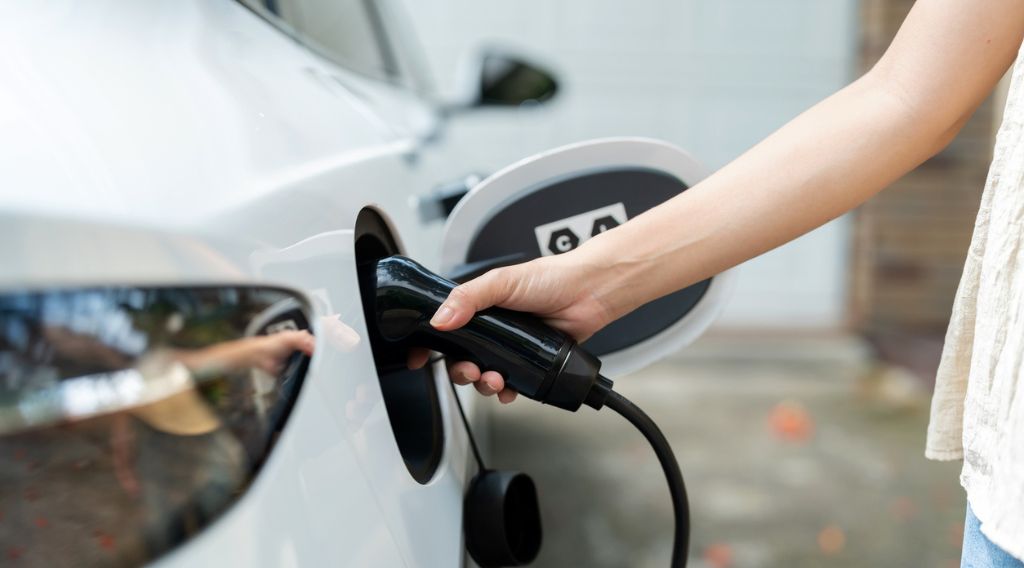 Electric vehicles (EVs) are an essential part of the effort to decarbonize the transportation sector by midcentury. Recently, a diverse coalition of stakeholders released analysis, findings, and recommendations on how to accelerate EV adoption in “A Road Map to Decarbonization in the Midcontinent: Transportation Electrification.” This post highlights the findings from the road map, which were developed to help inform decision-making by state and local leaders, policy makers and private sector actors.
Electric vehicles (EVs) are an essential part of the effort to decarbonize the transportation sector by midcentury. Recently, a diverse coalition of stakeholders released analysis, findings, and recommendations on how to accelerate EV adoption in “A Road Map to Decarbonization in the Midcontinent: Transportation Electrification.” This post highlights the findings from the road map, which were developed to help inform decision-making by state and local leaders, policy makers and private sector actors.
The coalition, called the Midcontinent Transportation Electrification Collaborative, includes automakers, electric utilities and cooperatives, EV charging companies, environmental groups and state officials from the region, facilitated by the Great Plains Institute, who are working to speed EV adoption in the region.
The road map, which builds on the first chapter released in July 2018 on the electricity sector, is significant given the makeup of the stakeholders involved and the rigorous analysis included. Not to mention that this is the first-of-its-kind road map to decarbonization for any region in the US.
You can download the full road map chapter and explore the analysis on our interactive web portal. Below are the key findings from the road map that were developed by the coalition:
-
- Transportation electrification is an essential part of a decarbonized transportation sector. However, there are several barriers to widespread electrification, ranging from vehicle technology and battery costs to charging availability to consumer preferences and awareness. Increasing EV adoption requires a broad and comprehensive suite of market-facing policies to build market demand, facilitate EV charging, and create a positive experience for EV drivers.
- Even under optimistic “stretch” scenarios for EV adoption in the Midcontinent it is clear that other measures—such as low- and zero-carbon liquid fuels—may be necessary to reach higher levels of decarbonization in the sector.
- Pairing transportation electrification with electric sector carbon reductions can be a cost-effective way to achieve emissions reductions. Electrification of transportation resulted in emissions reductions in both the transportation and electricity sectors in all scenarios studied.
- EVs are generally less expensive to operate and maintain than traditional vehicles and the cost of the technology is decreasing rapidly.
- Electricity used in an EV in the Midcontinent is already a cleaner fuel than gasoline, diesel and compressed natural gas (CNG). Working toward further decarbonizing the electricity system, including through increased renewables deployment, will make electricity an even cleaner transportation fuel.
- EVs not only reduce carbon emissions, but emissions of other pollutants such as nitrogen oxides and particulate matter. Reductions in nitrogen oxides and particulate matter protect public health generally, and especially protect the health of sensitive populations like children and the elderly.[1]
- EVs present great opportunities for the electricity system and all electricity consumers. When properly managed, EV charging will result in better utilization of existing resources, especially variable resources such as wind and solar, and better utilization of resources can lead to lower electric rates.
- EV charging times matter. Rate designs and other managed charging strategies that steer vehicle charging to times of high renewable energy generation are important measures to lower the cost of decarbonizing the electricity and transportation sectors.
- Opportunities for light-, medium-, and heavy-duty vehicles. The analysis conducted for MTEC suggests opportunities for significant electrification across all classes of vehicles, not just light duty vehicles.
- Other low-carbon fuels and strategies will be needed. It is likely that EVs will not supply all of the needed carbon reductions in the transportation sector. Action must be taken to encourage greater efficiency in internal combustion engines and the development and production of other low- and zero-carbon fuels to cover any gap left in the sector and to address parts of the sector that may not be served by battery electric vehicles.
- Consumers are the key. Decarbonization of the transportation sector through electrification depends on the consumer. State leaders and private sector actors need to work to create a consumer ecosystem that encourages consumers to buy EVs.
- Travel demand matters. While greater EV penetration can produce strong economic and health benefits, the greatest environmental benefits are realized when travel demand rises less. Indeed, the analysis tended to show that benefits were greatest when EV penetration was the highest and vehicle miles traveled were the lowest.
These findings, along with the road map analysis and recommendations can help policy makers, regulators, and key stakeholders in the region as they consider options for investment in technologies and infrastructure to benefit their economy and environment. As transportation has recently surpassed electricity as the largest source of greenhouse gas emissions in the US, it is essential to accelerate electric vehicle adoption in combination with clean electricity generation to decarbonize our energy system.
Explore the interactive road map on our web portal or download the transportation and electricity sector chapters here: roadmap.betterenergy.org.


